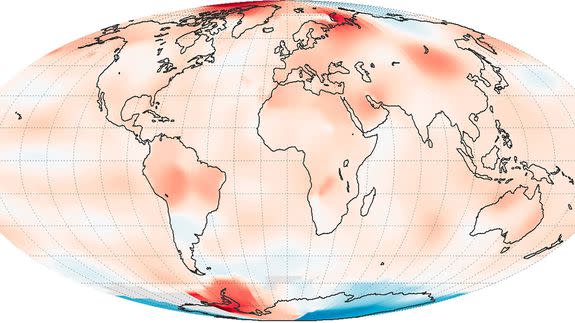Visualizing July's astounding global temperature records

July set a rare temperature record during a year that is featuring off the charts warmth. The month was the warmest month of any month recorded since at least 1880, according to NASA, the National Oceanic and Atmospheric Administration and the Japan Meteorological Agency.
NASA found that July 2016 squeaked past the previous top three record warm months, which were each set since 2008.
SEE ALSO: Connecting the dots on 2016’s extreme summer weather and global warming
“It wasn’t by the widest of margins, but July 2016 was the warmest month since modern record-keeping began in 1880,” said NASA's Gavin Schmidt, who directs the Goddard Institute for Space Studies (GISS).
“It appears almost a certainty that 2016 also will be the warmest year on record.”
To drive home the point that 2016 temperatures are trending well above all other years in recorded history (which, it should be noted, is playing a major role in deadly weather extremes) Joshua Stevens of NASA put together this animation (above).
It shows global temperature departures from average for every month since 1880, and uses the baseline of 1980-2015.
It, along with other recent climate visualizations, clearly shows that 2016 comes after a long period of increasing global temperatures.
This trend has been tied to human-caused emissions of greenhouse gases.
